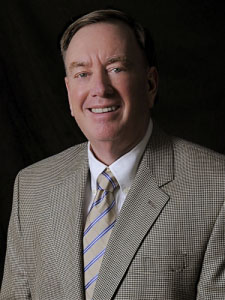MSU researchers receive grants to study dairy cattle health
$500K grants will be used to study BLV, dairy cow reproduction

EAST LANSING, Mich. – Two Michigan State University (MSU) Department of Animal Science researchers have each received $500,000 grants from USDA’s Agriculture and Food Research Initiative (AFRI) for research related to dairy cow health.
Tasia Taxis, assistant professor in the Department of Animal Science, is looking to build off of work already accomplished by MSU’s bovine leukemia virus (BLV) team and further advance development of research designed to limit the spread of the disease.
Taxis credits her mentor, Paul Bartlett, professor in the College of Veterinary Medicine, for laying the foundation for her research.
“We’ve been working together for a while and he mentored me early in my career,” Taxis said. “It was a beautiful mentorship, and he’s kind of stepping back and passing the torch. All of my current research is really backed by what the MSU BLV research team has been working on for years under Dr. Bartlett and other members of the BLV team at MSU.”
BLV is a retrovirus of cattle and is related to retroviruses of other mammals, including HIV in humans. BLV causes Enzootic bovine leukosis, a contagious disease of cattle, that can cause a cancer of lymphatic tissue.
Animals that have this cancer often die within months of the onset of clinical signs, which can include tumors throughout the body, loss of appetite, weight loss, weakness, fever, abnormal breathing, bulging eyes and partial paralysis of the hind legs.
Taxis is researching if BLV can be detected earlier in a calf’s life, and whether genetic selection can be used to stop the proliferation of the disease within a herd.
“Typically, what we've looked at has been the milking herd, so the older cows after they've already had a calf and are starting to produce milk,” Taxis said. “But the thought is that maybe the calves become infected with the virus, and they don't really show sickness until they become pregnant or have their first calf.”
“This project is really monitoring calf care to make sure that our calves are healthy and do not infect the milking herd when they get older.”
Very few studies have looked at the calves and their development with BLV exposure.
The project is focused on identifying super shedders – cows who have BLV that is replicating quickly in multiple cells. Super shedders are more infectious and can easily spread BLV to other cattle in the herd.
“We need to target the worst-case scenarios, which are the most infectious animals that appear to be responsible for most of the viral transmission,” she said.
Taxis will work with dairy farms across the state to implement her research. She hopes to complete herd enrollments this fall and start the study with new calves early in 2021. She will be working with two graduate students on the project.
“In the spring, we will start looking at these calves from birth until they become mothers themselves,” she said. “We really hope this project will lead to healthier animals on the farm and better, more profitable milk production.”
Richard Pursley, professor in the Department of Animal Science, will study declining fertility rates of dairy cows after they have their first calf.
 “Once dairy cows have a calf, fertility drops 50 percent,” Pursley said. “We want to understand where and why these losses occur. The biggest problem we have with decreasing fertility is that we either don't get a viable embryo growing following artificial insemination, or if we do, too many of these embryos are lost in the first trimester of pregnancy.”
“Once dairy cows have a calf, fertility drops 50 percent,” Pursley said. “We want to understand where and why these losses occur. The biggest problem we have with decreasing fertility is that we either don't get a viable embryo growing following artificial insemination, or if we do, too many of these embryos are lost in the first trimester of pregnancy.”
The timeframe between insemination and when the embryo attaches to the uterus is different for a first-time mother (21-22 days) versus a dairy cow who has already had a calf (19-27 days), and Pursley hopes to discover why that happens.
“We don't know if the cows that have embryos attaching later are the cows that have a greater chance for pregnancy losses,” he said. “If so, we need to find out if that’s something we can do to improve time of attachment to reduce embryonic loss.”
Pursley also hopes to determine the effects this variable timeframe might have an an embryo.
“Profitability of a dairy farm is completely dependent upon timely calving intervals of cows,” he said. “Production is all about controlling the calving interval with regards to how much milk these cows are producing on a farm.”
Pursley will also examine the efficacy of varying fertilization management methods during this study, including using Ovsynch, a breeding program he co-developed in the mid-90s that revolutionized the way dairy producers worldwide manage reproduction.
Ovsynch fertility programs precisely time artificial insemination to improve dairy cattle reproduction.
Pursley will work with Nobis Dairy Farms in St. John’s, Michigan, on the study. He said he is excited about taking the research element of this project and using it to directly help producers and improve animal care.
“I’m very lucky to be able to utilize my MSU Extension appointment to generate research findings that I can then take out to the veterinarians and their producers to improve profit on dairy farms.”
AFRI, the nation’s leading competitive grants program for agricultural sciences, is part of the National Institute of Food and Agriculture (NIFA) under USDA.



 Print
Print Email
Email





